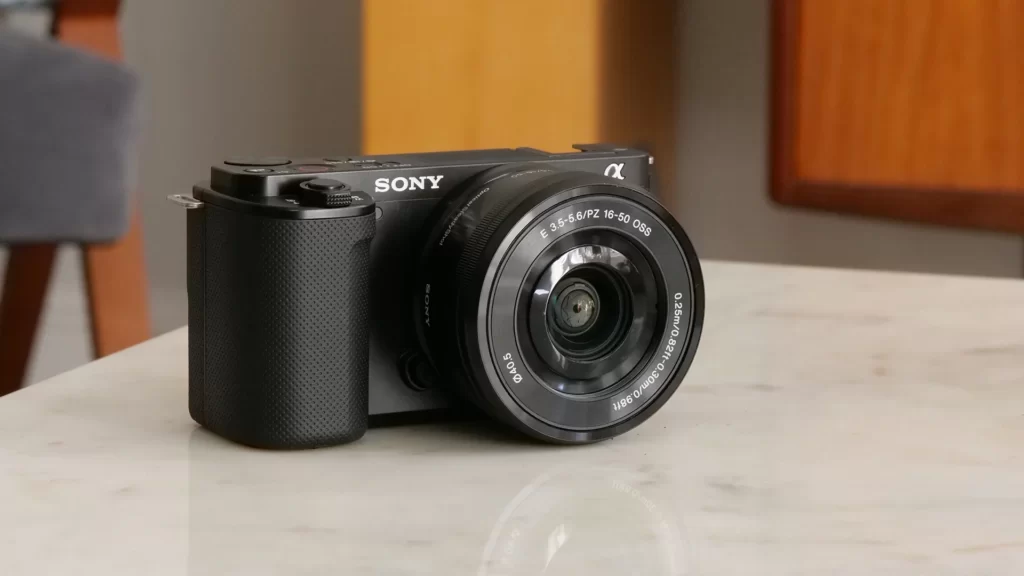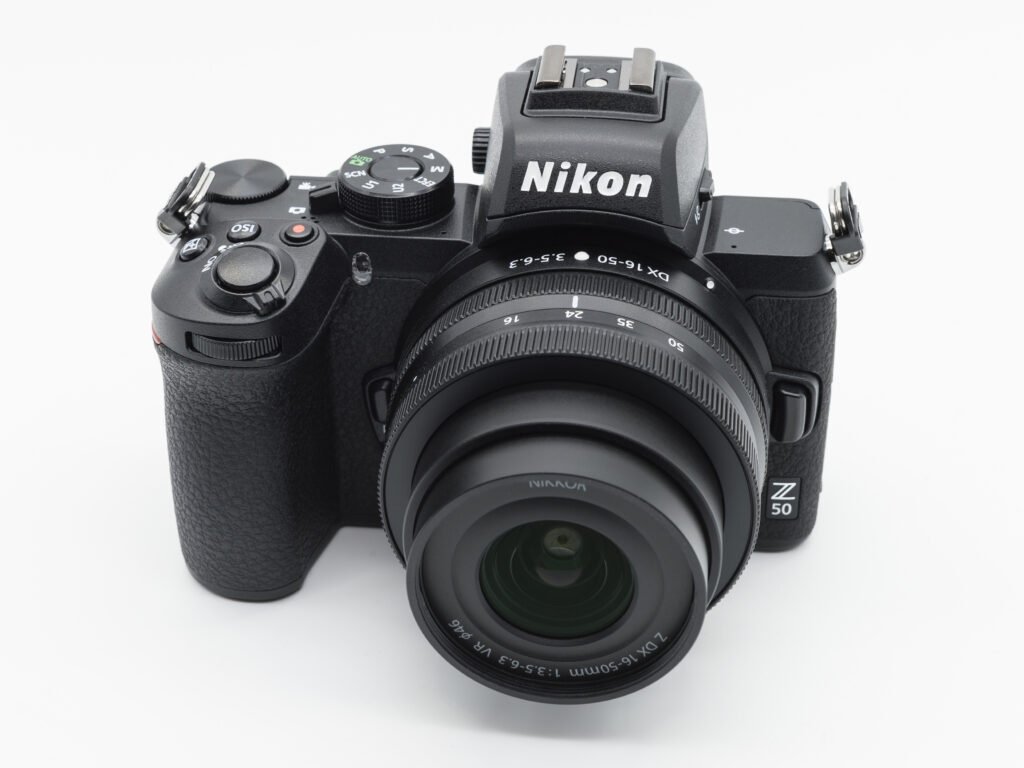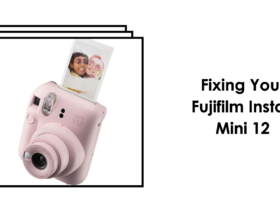The Canon M50 Mark II has rapidly become a favorite among content creators and photographers, boasting impressive features like 4K video, a 24.1 MP sensor, and a compact design.
However, the market is filled with an array of remarkable mirrorless cameras, each offering unique benefits that may better suit your individual needs. In this article, we will explore the top 5 Canon M50 Mark II alternatives, diving into their specifications, strengths, and weaknesses. By the end, you’ll have a clearer understanding of the available options, empowering you to make the best decision for your creative pursuits.
So, let’s get started on this journey to discover the perfect mirrorless camera for you!
Top 5 Canon M50 Mark II Alternatives
1. Sony ZV-E10

The Canon M50 Mark II has undoubtedly earned its place among the top mirrorless cameras available today, offering a wealth of features for photographers and content creators alike. However, the Sony ZV-E10 emerges as a strong alternative, boasting its own set of impressive specifications and features. In this detailed comparison, we will explore how the Sony ZV-E10 stands up against the Canon M50 Mark II, helping you make an informed decision when choosing the best camera for your needs.
Sensor: Full Frame or APS-C
Both the Canon M50 Mark II and Sony ZV-E10 are equipped with APS-C sensors. The M50 Mark II features a 24.1 MP sensor, while the ZV-E10 offers a slightly higher 24.2 MP resolution. This slight difference in resolution is negligible and unlikely to impact overall image quality.
Autofocus
When it comes to autofocus, the Sony ZV-E10 has a clear advantage. With 425 phase-detection and 425 contrast-detection autofocus points, the ZV-E10 provides faster and more accurate focusing compared to the M50 Mark II’s 143 contrast-detection and 99 phase-detection points. The ZV-E10 also has a wider autofocus sensitivity range of -3 to +20 EV compared to the M50 Mark II’s -2 to +18 EV.
Speed
The Sony ZV-E10 offers faster continuous shooting speeds, capturing up to 11 fps at 24.2 MP, compared to the M50 Mark II’s maximum of 10 fps at 24.1 MP. This difference may be important for those capturing fast-moving subjects or action photography.
Design: Dimension and Weight Comparison
The Sony ZV-E10 is slightly more compact and lighter than the Canon M50 Mark II. The ZV-E10 measures 115.2 x 64.2 x 44.8 mm and weighs 343 g, while the M50 Mark II measures 116.3 x 88.1 x 58.7 mm and weighs 387 g. This difference might be worth considering for those who prioritize portability and ease of handling.
Viewfinder and LCD Monitor
Both cameras feature electronic viewfinders with similar resolution (2,360,000-dot for the M50 Mark II and 2,360,000-dot for the ZV-E10). They also have articulating touchscreen LCD monitors, though the ZV-E10’s 3.0-inch 921,600-dot display has a slightly lower resolution compared to the M50 Mark II’s 3.0-inch 1,040,000-dot display.
Battery Life
The Canon M50 Mark II utilizes the LP-E12 battery, providing an estimated 305 shots per charge. The Sony ZV-E10 uses the NP-FW50 battery, which offers approximately 440 shots per charge. This longer battery life may be an essential factor for those who require extended shooting sessions without the need to frequently change batteries.
Video Capabilities
Canon M50 Mark II offers UHD 4K video recording at 23.98 fps, as well as 1080p recording at 23.98, 29.97, and 59.94 fps. The 4K recording, however, suffers from a 1.6x crop factor and lacks Dual Pixel AF, making it less ideal for professional videography. It also has a 30-minute recording limit, which can be a drawback for longer shoots.
In comparison, the Sony ZV-E10 provides 4K video recording at 24, 25, and 29.97 fps with no additional crop factor. Full HD 1080p recording is available at various frame rates up to 120 fps, allowing for slow-motion capture. The ZV-E10 also supports S-Log2, S-Log3, and HLG profiles for greater color grading flexibility in post-production. Unlike the M50 Mark II, there is no recording limit, making it a better choice for extended recording sessions.
Lens Mount and Availability
The Canon M50 Mark II features an EF-M lens mount, which is compatible with Canon’s range of mirrorless lenses. While the selection of native EF-M lenses is more limited compared to Canon’s EF and EF-S lenses, adapters are available to expand lens options. However, using an adapter may impact autofocus performance and compatibility with certain lenses.
On the other hand, the Sony ZV-E10 uses the Sony E-mount, offering compatibility with a wide range of Sony’s mirrorless lenses, including both full-frame and APS-C options. In addition, third-party manufacturers such as Sigma, Tamron, and Zeiss produce lenses for the E-mount, providing users with an extensive selection of lenses to choose from.
Price
The Canon M50 Mark II is priced at $700, making it a more affordable option compared to the Sony ZV-E10, which is priced at $800. However, considering the features and performance, users should evaluate if the additional $100 for the ZV-E10 provides the necessary value for their specific needs.
2. Nikon Z50

In the world of mirrorless cameras, the Canon M50 Mark II has made a name for itself as an excellent option for photographers and videographers alike. However, the Nikon Z50 presents itself as a worthy alternative, offering a compelling set of features and performance that can rival the Canon M50 Mark II.
Sensor
Both the Canon M50 Mark II and the Nikon Z50 sport APS-C sensors, with the former having a 24.1-megapixel resolution and the latter offering a slightly lower 20.9-megapixel resolution. The difference in resolution is negligible for most users, and both cameras produce high-quality images.
Autofocus
The Canon M50 Mark II features a dual-pixel autofocus system with 143 contrast-detection points and 99 phase-detection points, while the Nikon Z50 relies on a phase-detection system with 209 points. The Z50’s autofocus system is faster and more accurate, providing better performance in challenging shooting conditions.
Speed
The Nikon Z50 has a slight edge in continuous shooting, offering 11 fps compared to the Canon M50 Mark II’s 10 fps. This can be beneficial for capturing fast-moving subjects or action scenes.
Design
Both cameras have similar dimensions and weight. The Canon M50 Mark II measures 116.3 x 88.1 x 58.7 mm and weighs 387g, while the Nikon Z50 is slightly larger and heavier at 126.5 x 93.5 x 60 mm and 395g. The difference is not significant and should not impact the user experience.
Viewfinder and LCD monitor
Both cameras feature electronic viewfinders with 2.36 million dots, providing a clear and accurate preview of the scene. The Nikon Z50 has a slightly larger LCD monitor (3.2″ vs. 3.0″) and offers a higher resolution (1,040,000 dots vs. 1,040,000 dots). The Z50’s LCD monitor also tilts 180 degrees, which is useful for capturing selfies or shooting from awkward angles.
Battery life
The Nikon Z50 has a better battery life, offering approximately 300 shots per charge compared to the Canon M50 Mark II’s 235 shots. This means that you can shoot for longer periods without needing to recharge or swap batteries.
Video capabilities
Both cameras can record 4K video at 24 fps, but the Canon M50 Mark II has a significant crop factor when shooting in 4K, which can be limiting for some users. The Nikon Z50, on the other hand, records 4K video without a crop, providing a wider field of view.
Lens mount and availability
The Canon M50 Mark II uses the EF-M lens mount, while the Nikon Z50 uses the newer Nikon Z mount. While Canon’s EF-M lenses are more widely available, the Nikon Z system is growing rapidly, and the Z mount offers better compatibility with full-frame lenses, making it more future-proof.
Price
The Canon M50 Mark II is priced at around $700, while the Nikon Z50 is slightly more expensive at $900. The higher price of the Nikon Z50 is justified by its superior autofocus system, better video capabilities, and larger, higher-resolution LCD monitor.
3. Canon EOS R50

The Canon EOS R50 is an APS-C mirrorless camera that boasts an array of features designed for both photography and video enthusiasts. With a price tag of $700, the same as the Canon M50 Mark II, the EOS R50 presents a compelling option for those looking for a versatile camera system. Let’s explore the similarities and differences between the two models.
Sensor- Full frame or APS-C
Both the Canon M50 Mark II and the EOS R50 feature APS-C sensors with an effective resolution of 24.1 and 24.2 megapixels, respectively. The 1.6x crop factor is consistent across both models, and both cameras are designed to produce high-quality images.
Autofocus
The Canon M50 Mark II features 143 contrast-detection points and 99 phase-detection points in its autofocus system. In contrast, the EOS R50 boasts an impressive 4,503 phase-detection autofocus points for photography and 3,713 phase-detection points for video, providing faster and more accurate focusing across a broader range of subjects and lighting conditions.
Speed
The EOS R50 has a clear advantage in continuous shooting speed, offering up to 15 fps with its electronic shutter, compared to the M50 Mark II’s 10 fps. This allows users to capture fast-moving subjects or action scenes with greater ease.
Design- Dimension and Weight Comparison
The M50 Mark II measures 116.3 x 88.1 x 58.7 mm and weighs 387g, while the EOS R50 has dimensions of 116.3 x 85.5 x 68.8 mm and weighs 375g with a battery and recording media. The two cameras are similar in size and weight, making them both portable and easy to handle.
Viewfinder and LCD monitor
Both cameras feature built-in electronic viewfinders with a resolution of 2.36 million dots, providing clear and accurate previews of the scene. The M50 Mark II has a 3.0″ articulating touchscreen LCD monitor with a resolution of 1,040,000 dots, while the EOS R50 has a slightly smaller 3.0″ articulating touchscreen LCD monitor with a higher resolution of 1,062,000 dots.
Battery life
The M50 Mark II uses an LP-E12 battery, offering approximately 235 shots per charge. The EOS R50 utilizes an LP-E17 battery, providing improved battery life, although the exact number of shots per charge is not specified.
Video Capabilities
Both cameras can record 4K UHD video at 23.98 fps, but the M50 Mark II has a significant crop factor when shooting in 4K. The EOS R50 records 4K video without a crop, providing a wider field of view. Additionally, the EOS R50 supports 1080p video recording at up to 120 fps, allowing for slow-motion capture.
Lens Mount and Availability
The M50 Mark II uses the Canon EF-M lens mount, while the EOS R50 uses the newer Canon RF lens mount. Although EF-M lenses are more widely available, the RF mount provides better compatibility with Canon’s full-frame lenses and is more future-proof as Canon expands its RF lens lineup.
Price
Both the Canon M50 Mark II and the EOS R50 are priced at $700, making them equally affordable options for those looking to enter the world of mirrorless cameras. The choice between the two will depend on the individual’s specific needs and preferences.
4. Nikon Z30

The Nikon Z30 is a mirrorless camera that has also emerged as a strong alternative to the Canon M50 Mark II for those looking for an entry-level camera. The Z30 offers a variety of features and performance capabilities that can rival the M50 Mark II.
Sensor – Full frame or APSC
Both the Canon M50 Mark II and Nikon Z30 utilize APS-C sensors. The M50 Mark II has a 24.1-megapixel sensor, while the Z30 comes with a 20.8-megapixel sensor. While there is a slight difference in resolution, both cameras provide excellent image quality for an entry-level camera.
Autofocus
The M50 Mark II features a Dual Pixel CMOS AF system, which is known for its fast and accurate focusing performance. It offers 143 contrast-detection points and 99 phase-detection points. The Nikon Z30, on the other hand, has a hybrid autofocus system with 209 phase-detection points, providing a wider coverage area and potentially more accurate focus tracking.
Speed
The Canon M50 Mark II offers a continuous shooting speed of up to 10 fps for a limited number of shots (10 frames in RAW and 33 frames in JPEG). The Nikon Z30, however, offers a faster continuous shooting speed of up to 11 fps, making it a better option for capturing fast-moving subjects.
Design – Dimension and Weight Comparison
The Nikon Z30 is slightly larger than the Canon M50 Mark II, with dimensions of 128 x 73.5 x 59.5mm compared to the M50 Mark II’s 116.3 x 88.1 x 58.7mm. The Z30 is also lighter, weighing in at 350g (body only) as opposed to the M50 Mark II’s 387g (with battery and recording media). The difference in size and weight may impact portability and handling, depending on personal preferences.
Viewfinder and LCD monitor
Both cameras feature electronic viewfinders and 3.0″ articulating touchscreen LCD monitors. The Canon M50 Mark II has a higher resolution viewfinder (2,360,000 dots) compared to the Z30 (1,040,000 dots), which may provide a clearer and more detailed view of the scene.
Battery life
The Nikon Z30 boasts a longer battery life, offering approximately 330 shots per charge with its EN-EL25 battery. The Canon M50 Mark II, using the LP-E12 battery, provides a slightly shorter battery life.
Video Capabilities
Both cameras offer 4K video recording capabilities, with the M50 Mark II recording at 23.98 fps and the Z30 recording at 23.98, 25, and 29.97 fps. The Z30 also provides additional frame rate options for 1080p recording, including 100 fps for slow-motion footage, giving it an edge in terms of video versatility.
Lens Mount and Availability
The Canon M50 Mark II uses the EF-M lens mount, which has a more limited selection of lenses compared to the Nikon Z mount on the Z30. The Nikon Z mount has a wider range of lenses available, offering more options for photographers looking to expand their collection.
Price
The Canon M50 Mark II is priced at $700, while the Nikon Z30 comes in at a slightly higher price point of $800. The additional cost for the Z30 may be justified by its better autofocus system, faster continuous shooting speed, and more versatile video capabilities.
5. Sony a6400

The Canon EOS M50 Mark II and Sony a6400 are both excellent mirrorless cameras aimed at photographers and videographers alike. Although the Canon M50 Mark II is an enticing option, the Sony a6400 stands out as a worthy alternative for those looking for a feature-packed camera at a reasonable price.
Sensor- Full frame or APS-C
Both the Canon M50 Mark II and Sony a6400 feature an APS-C sized sensor, providing a 1.6x crop factor for the Canon and a 1.5x crop factor for the Sony. The effective resolution is similar, with the Canon offering 24.1 megapixels and the Sony providing 24.2 megapixels. Both cameras offer excellent image quality, but the slightly larger sensor in the Sony a6400 may provide a marginal advantage in low-light situations.
Autofocus
The Sony a6400 has an edge in autofocus performance, featuring 425 phase-detection and 425 contrast-detection points, compared to the Canon M50 Mark II’s 99 phase-detection and 143 contrast-detection points. Additionally, the Sony a6400’s autofocus system is more sensitive, ranging from -2 to +20 EV, while the Canon M50 Mark II’s autofocus sensitivity ranges from -2 to +18 EV. This makes the Sony a6400 more adept at focusing in challenging lighting conditions.
Speed
The Sony a6400 boasts a faster continuous shooting speed of 11 fps compared to the Canon M50 Mark II’s 10 fps. While this difference may not be significant for some users, it could make a difference in capturing fast-moving subjects such as sports and wildlife.
Design- Dimension and Weight Comparison
Both cameras are compact and lightweight, with the Canon M50 Mark II weighing 387g and measuring 116.3 x 88.1 x 58.7mm, while the Sony a6400 weighs 403g and measures 120 x 66.9 x 59.7mm. The difference in weight and size is minimal, but users may find the slightly smaller dimensions of the Canon M50 Mark II more comfortable for extended periods.
Viewfinder and LCD monitor
Both cameras feature built-in electronic viewfinders and 3.0″ articulating touchscreen LCDs. However, the Sony a6400’s viewfinder offers a higher resolution of 2,359,296 dots compared to the Canon M50 Mark II’s 2,360,000-dot viewfinder. This means that the Sony a6400 provides a clearer, more detailed view when composing images.
Battery life
The Sony a6400’s NP-FW50 battery offers a longer battery life, providing 360 shots per charge compared to the Canon M50 Mark II’s 305 shots using the LP-E12 battery. For those who require extended shooting times, the Sony a6400’s longer battery life will be an advantage.
Video Capabilities
The Sony a6400 offers more advanced video features, with internal UHD 4K recording at up to 30 fps and 1080p recording at up to 120 fps. It also offers 4:2:2 8-bit external recording via HDMI. The Canon M50 Mark II, on the other hand, offers UHD 4K recording at 24 fps and 1080p recording at up to 60 fps, without external recording capabilities. For videographers, the Sony a6400 provides more versatility and options for capturing high-quality video.
Lens Mount
The Canon M50 Mark II uses the Canon EF-M lens mount, which is compatible with Canon’s range of EF-M lenses. However, it has a smaller selection of native lenses compared to the Sony E-mount used by the a6400. The Sony E-mount system has a more extensive range of native lenses, including options from third-party manufacturers like Sigma and Tamron. Additionally, adapters are available for both systems, allowing users to mount various other lens types onto their cameras.
Price
As of the time of writing, the Canon M50 Mark II is priced slightly lower than the Sony a6400. The Canon M50 Mark II retails for approximately $600, while the Sony a6400 retails for approximately $900. It is important to consider the additional features and capabilities of the Sony a6400 when comparing the prices, as well as the larger lens selection available for the Sony E-mount system.
So there you go, this was our curated listed of cameras that are not just good alternatives to Canon M50 Mark II but excel in what they are made for, making you a good artist. Good Luck!
- Also Read- How To Do Multicam Editing In Davinci Resolve
- Also Read- How To Make A Video Transparent In Davinci Resolve
- Also Read- Free LOG To Rec.709 LUTs For Davinci Resolve












Got a Question?
Find us on Socials or Contact us and we’ll get back to you as soon as possible.